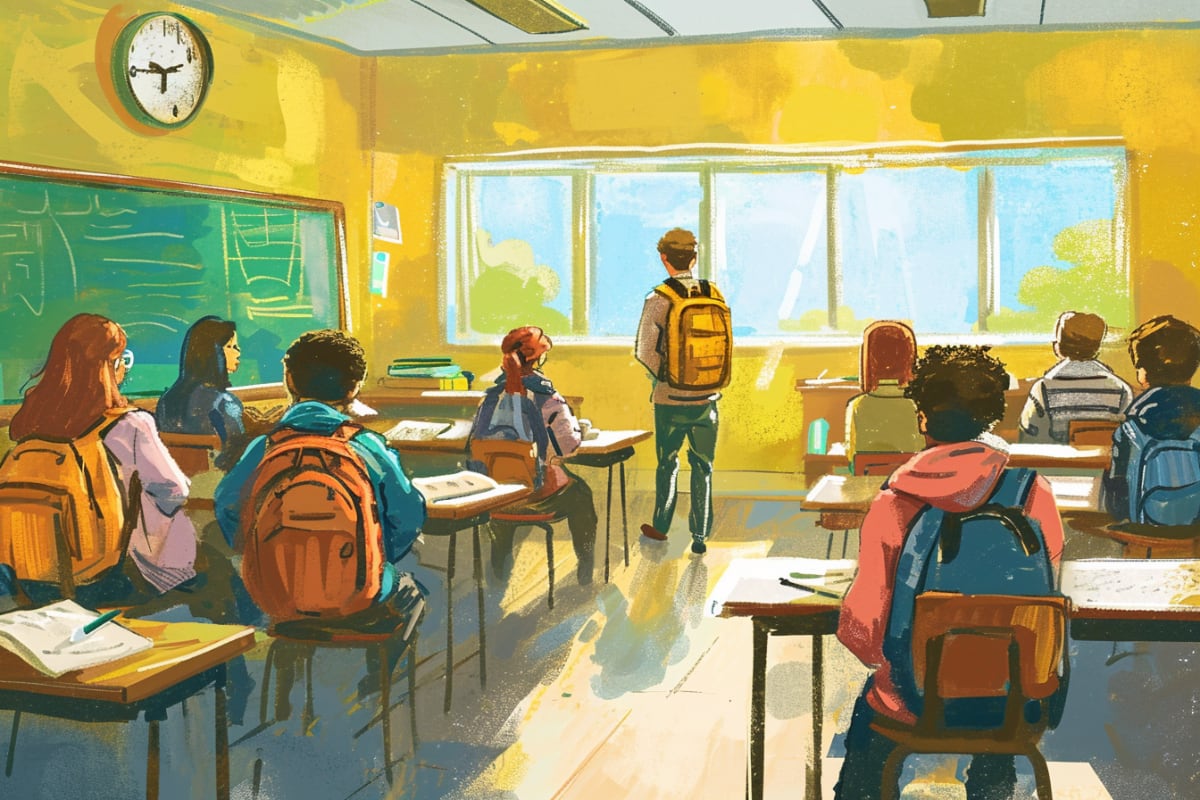In today’s fast-paced educational landscape, student engagement has become a vital component of the entire learning process. In fact, given the shortening attention span and the presence of an ever-increasing array of distractions designed to consume attention, student engagement may have shot up to being the single most important drive of academic success.
Despite the distractions, engaged students are more likely to participate actively in the classroom, exhibit higher levels of motivation, and retain information better than their disengaged counterparts.
Therefore, educators owe it to the students to implement effective engagement strategies that ensure learners remain focused and engaged throughout the learning process.
What is Student Engagement?
To better understand the strategies that can be used to foster a high level of student engagement, one must understand what student engagement means in the first place.
Well, on the whole, student engagement refers to the degree to which students are involved in the learning process. It refers to the motivation, enthusiasm, passion, and attentiveness that they show with regards to what they’re being taught.
Engaged students are those who are actively involved in the classroom, participate in discussions, ask questions, and take part in hands-on activities.
According to research, engaged students have a greater chance of achieving academic success and a higher level of satisfaction with their learning experience.
Goals of Student Engagement Strategies
Before we dive deeper into actual strategies for increasing student engagement, it is worth it to first examine what educators try to ultimately achieve with these strategies, and how these goals eventually lead to increased engagement:
1. Relationships
Naturally, when students form a close relationship with their teachers, they become more engaged with what is being taught. The best student engagement strategies, like the one in the upcoming section, are geared towards producing a stronger relationship between the students and their educators.
It should also be mentioned that fostering a strong relationship between students and teachers is always desired regardless of the level of education or the age of the students.
2. Autonomy
Secondly, a great student engagement strategy will have to contribute positively to helping the student develop a strong sense of autonomy and self-confidence. Even the group activities and collaborative effort, must be configured to not foster total dependency, but a sense of retaining personal autonomy while working as part of a group.
Students must also have a sense of control over what they are doing and how they are doing it. This autonomy can then be used to ensure the greater good for the group as a whole.
3. Competency
Lastly, the strategies below, as with all great student engagement strategies, have to be geared towards increasing a student’s competency levels. This is done by challenging the students, and equipping them with the resources they’ll need to overcome this challenges.
The feeling of doing so successfully can go a long way in increasing student engagement and helping the student develop a long-lasting feeling or competence.
Student Engagement Strategies
Luckily, there are a handful of strategies that educators can employ (and have employed) to facilitate a higher degree of student engagement in classrooms.
We take a look at four of the most popular and most effective below.
Active Learning
Active learning is a teaching approach that prioritizes interaction with what is being learnt. Active learning is the opposite of passive learning, a situation wherein students only passively take in information without being stimulated to do anything with it.
In active learning, learners engage with the learning process actively instead of passively listening to lectures. Active learning can be facilitated through participation in discussions, group activities, and other hands-on learning experiences. Through active learning, students get to develop critical thinking skills, promote collaboration, and retain information better.
Example
In a biology class, instead of being taught about the human circulatory system, a teacher can engage students in a hands-on activity where they build a model of the circulatory system and explain how it works.
Collaborative Learning
Collaborative learning is a teaching approach that prioritizes collaboration between students and other students, and even between teachers and the students, to increase engagement with the subject that is being taught.
In collaborative learning, students are encouraged to work together in groups. The goal is to solve related problems, complete tasks, and/or create a project.
Collaborative learning promotes social interaction, communication, and teamwork, which are essential skills in the workplace.
Example
In a literature class, students are arranged into separate groups to analyze a novel. Furthermore, they are tasked with creating a multimedia presentation that includes a summary of the plot, character analysis, and themes.
Formative Assessment
Formative assessment is a teaching approach that is aimed towards gathering feedback from students at each crucial stage of the learning process. The goal of formative assessment is to help educators identify gaps in student learning and provide feedback to students in real-time.
This approach goes a long way in promoting a self-regulated learning environment, wherein students get to see where they are with regards to what they’re learning. They can then, by their own accord, make a proactive decision to improve or get even better.
Example
In a math class, a teacher provides students with regular quizzes and assignments that assess their understanding of key concepts. The teacher can then provide feedback to students and adjust their teaching approach accordingly.
Personalized Learning
For a long time now it has been clear that students are different. Not only in terms of dispositions and personality, but also in how fast they assimilate and react to different teaching strategies.
Personalized learning, then, is a way of teaching that tailors the learning experience to meet the needs of individual learners. Personalized learning allows educators to adapt their teaching approach to meet the learning style, pace, and interests of each student.
Example
In a language class, the teacher can provide students with different reading materials that align with their interests and abilities. The teacher can also adapt their teaching approach to meet the learning style of each student, such as providing visual aids or audio recordings.
Tips for Implementing Student Engagement Strategies
In trying to implement the strategies above, it would help greatly if educators were to try to abide by the tips below:
- Adapt your teaching strategies to meet the needs of individual learners
- Give students enough clarity regarding assignment due dates and activities that are optional and those the are not
- Seek feedback from the students to understand the effectiveness or shortcomings of the strategies
- Think in terms of a well-defined structure, either daily, weekly, or mid-term
- Provide a variety of engagement strategies to keep students interested and motivated
- Use technology to enhance student engagement, such as online discussion forums, interactive quizzes, and multimedia presentations.
Monitoring and Adjusting Strategies
It is important to monitor the effectiveness of the student engagement strategies being implemented. Teachers can do this by collecting feedback from students about what they enjoyed and found helpful, and what they didn’t.
Some of the tools with which to do this include:
- surveys
- focus groups
- one-on-one meetings
- Activity data
Activity data are the data collected during various classroom activities, which can be used to monitor student engagement. These include attendance data, participation in class discussions, completion of assignments, and grades.
Conclusion
There is no denying at this point that student engagement is essential for effective learning. Engaged students are simply more motivated, and learn more effectively than disengaged ones. Consequently, they enjoy better academic outcomes.
While a great deal of student engagement is down to the students, teachers can nonetheless promote student engagement by using a variety of strategies such as active learning, collaborative learning, formative assessment, and personalized learning.
It is equally important to monitor the effectiveness of these strategies and adjust them as needed to ensure that all students are engaged in the learning process.






